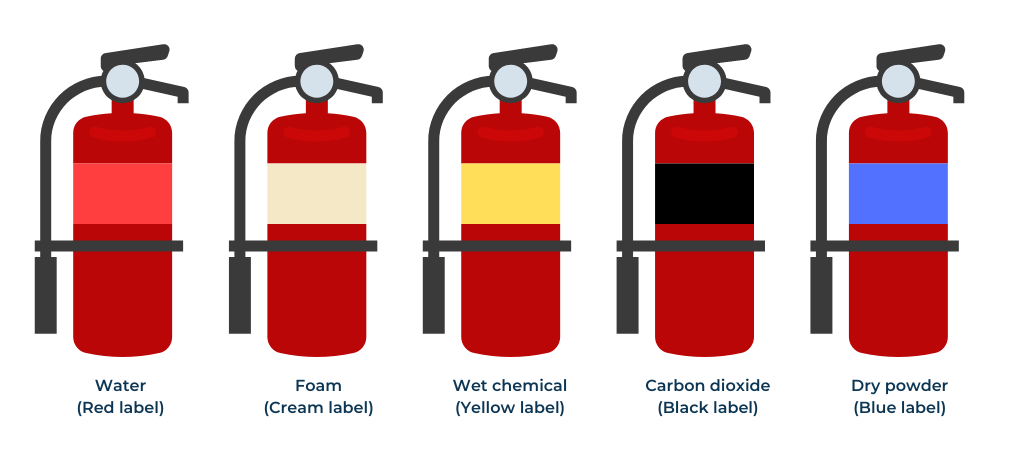This blog can be delivered to your staff as a Toolbox Talk. If you require a specific Toolbox Talk for your workplace, please feel free to get in touch.
 Reason: Fire kills on average 260 people in Britain every year and injures thousands more. Knowing how to prevent a fire can save lives.
Reason: Fire kills on average 260 people in Britain every year and injures thousands more. Knowing how to prevent a fire can save lives.
Outline: This talk covers fire prevention, precautions, types of extinguisher and actions to take in the
event of a fire.
Fire prevention
- Don’t hang clothing over or near heating equipment.
- Don’t let paper, oily rags or other rubbish accumulate, and only smoke in designated smoking areas.
- Use purpose-made containers (not open tins or buckets) when handling or storing flammable liquids.
- Don’t overload electrical sockets – one socket, one plug.
- Handle flammable liquids at a safe distance from possible sources of ignition.
- Ensure there are no adjacent flammable materials, or shield them with fire-resistant materials, before using blowlamps and cutting equipment.
- Bitumen boilers, soldering irons and gas rings must be on non-combustible stands.
- When electrical equipment is not in use, switch it off: beware of heat produced by halogen lamps.
- Use appropriate storage cages/cabinets for flammable materials where large amounts of material are stored to maintain a fire gap between them and adjacent walls/partitions.

The Fire Triangle
Fire precautions
- Make sure you know what to do if there is a fire.
- Make sure you know your escape route and assembly point.
- Keep escape routes clear and unobstructed.
- Don’t obstruct access to fire-fighting equipment.
- Only attempt to fight a small (wastepaper bin-sized) fire and then only if you have been trained to select and use a fire extinguisher.
Fire extinguishers
All extinguishers should now be coloured red with a contrasting colour panel to indicate the contents.
- Water (red) for use on paper, wood, textile and solid material fires.
- Carbon dioxide (black) for use on liquid and electrical fires.
- Foam (cream) for use on liquid fires.
- Powder (blue) for use on liquid and electrical fires and specialist dry powders for use on metal fires.
- Wet chemical (yellow) for use on wood, paper, textile, cooking oil and solid material fires.

Know what fire extinguisher you will need in the event of an emergency. You may not have time to read the label if fire breaks out.
In the event of a fire
- Raise the alarm, call the emergency services, go to the assembly point and tell your supervisor.
- Evacuate the building or area you are working in.
- If you have been trained and, if it is necessary, fight a small fire with extinguishers provided. Don’t put yourself at risk. Always ensure you have an escape route.

What should flammable liquids be stored in?
What checks should you carry out before and after using cutting and welding equipment?
What are the precautions concerning extinguishers and fire exits?
What type of fire can water be used on?
What actions should you take in the event of a fire?
What extinguisher should be used on a liquid fire?
What are five ways of preventing fires on site?

Now inform your workers of actions to be taken in the event of an emergency on site, and relevant parts of the fire safety plan.
If you have any questions about the contents of this Toolbox Talk, do not hesitate to contact us – our team would be happy to help you with any queries. Find more Toolbox Talks here.
Need further training? Check out our online Fire Safety course here.
